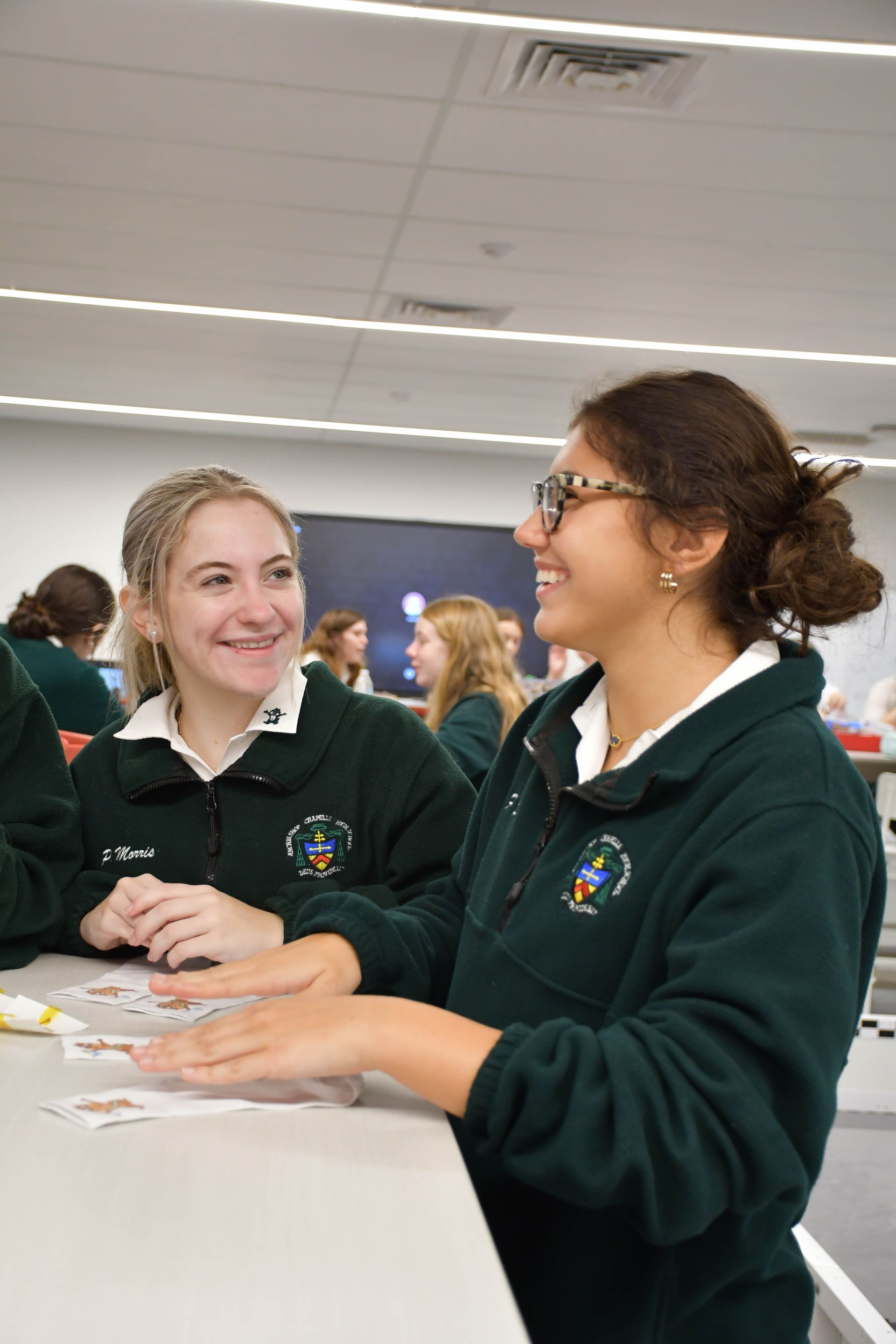PUBLISHED ON September 11, 2025
By: Kat Elmer '29
"You're never fully dressed without a smile!" Smiling is interesting because it's something that isn't unique to one time, place, or culture; it's everywhere from a 1970s musical, to a current times horror movie. The expression is something uncomplicated, yet multifaceted. People smile for a whole host of reasons all throughout their lives. Many of the intriguing things about your smile can be found in its communicative use, history, and health benefits.
Someone's smile can communicate a billion distinct things nonverbally. The most obvious is happiness. Everyone knows that blissful feeling of being so full and high on life that you just can't help but grin. Even when it's not instinctual and it is something you choose to do, it communicates something similar. When someone needs reassurance, confidence, or some sort of strength, you smile at them to convey your happiness with them or what they are doing. There is something within all of us that just loves to see someone else smile, especially at something we did.
A smile can convey politeness and attentiveness as well. Oftentimes, when listening to someone speak, you might smile at them to show that you are readily listening. Especially in America, smiling at people as you pass them is common. It's an effortless gesture that people like to do to show a sense of kindness or respect to strangers. The nonverbal aspect of smiling is also something of note. In her and her team's research on the culture of emotion, Paula Niedenthal says, "-link the migratory history of a country's population with present-day cultural differences in how overtly and clearly emotions are expressed to others…" A smile is an invaluable tool when communicating with someone you don't share a language with. Though smiling is instinctual, it wasn't always socially acceptable.
You may note that in most older paintings you see, the subject isn't smiling. This isn't because smiling is a recent thing or that there was a lack of joy in the past. In part, these paintings were created before dentistry was invented. Dental Hygienist Jacqueline Elmer says this, “It is safe to say that the history of smiling and its effects on the human body can be linked back to the lack of dental care that was available at the time.” Having someone paint a portrait of you when your teeth are rotting wouldn't be the best impression to make. Around this time, smiling was also associated with a lack of decorum. Since smiling is such a polite gesture in today's world, it is funny to think that smiling would be tied with impoliteness in the past. Going further back in time, smiling does have an evolutionary purpose. The expression we make is most similar to the baring of teeth by primates. The way primates do this looks uncannily close to a human smile, just without the eyes. The reason why they do this is akin to humans as well. Primates will bare their teeth to show passiveness to others; likewise, humans will smile to show friendliness or a lack of harmful intent. While we have the ability to smile for its social ramifications, smiling has a physical aspect, too.
Smiling is tied to more than just your mental state. Smiling and related emotions have a lot of effects on your body, too. Since the expression is so closely linked to happiness in our brains, just faking a smile releases endorphins and lowers blood pressure. However, faking happiness for an extended period isn't a good idea. Studies show that service workers who fake smiles for customers are more likely to have substance abuse issues. Moving on, our bodies naturally react to seeing someone else smile at us. We have a mirror reflex that gives us the instinct to copy the motions of the people around us. Similarly to how when you see someone else yawn, you yawn too, when you see someone smile, you want to smile back for more reasons than just societal convention. Countless studies also link optimism to a longer lifespan. People who have a better outlook on life are at lower risk of an early death due to cancer or infection. These results apply not only to yourself but also to the people you smile at. The photography club's Grace Rieth says, "Even if you're sad, a smile will always brighten your day. It's scientifically proven!" Ask anyone, and they will tell you they feel better when they are smiled at.
Smiling is physically, mentally, and socially intertwined with a sense of happiness and kindness. It is such a small expression that it is easy for us to forget its effect on ourselves and others. Although it is interesting to know about smiling communicatively, historically, and physically, the most important thing to remember is that we all hold a lot of power within our smiles. It is reiterated repeatedly that the little things mean more ad nauseam, but I would argue that smiling is big. Understanding our effect on ourselves and others when we smile should show you that.
Recommended Posts
































